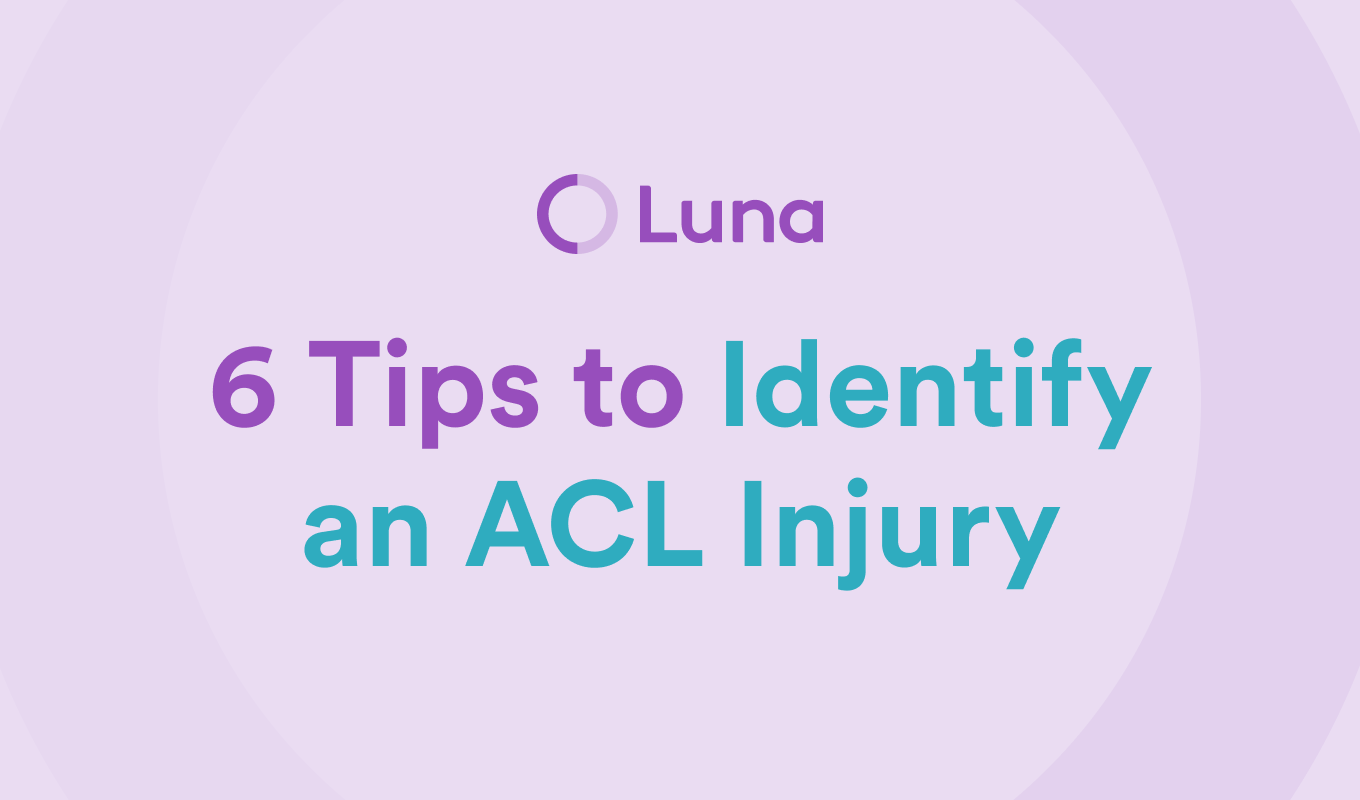Experiencing a Torn ACL: What It Feels Like and 6 Tips to Identify an ACL Injury

When it comes to injuries, tearing your ACL is one of the most common and devastating —affecting approximately 1 in 3,500 people. It leaves even the most experienced athletes feeling helpless and defeated. That's why it's good to know the warning signs, so you can get treatment as soon as possible and return to the game.
Although often occurring in sports-related accidents or high-impact collisions, this type of injury can occur in either athletes or non-athletes and cause significant pain, swelling, and stiffness. So whether you're an aspiring athlete wishing to return to the field or simply want to resume your daily activities without the burden of pain, let's take a closer look to discover what a torn ACL feels like and some helpful tips for identifying this type of injury.
Understanding Your ACL
So what does a torn ACL feel like, and how do you know if you need physical therapy treatment?
To fully understand a torn ACL, we need to start with how the joint in the knee works. The knee includes bones that connect through ligaments that help keep them in place, and the ACL is the primary ligament that connects the femur to the tibia.
Imagine the sensation of a sudden, audible "pop" in your knee or a sudden shift in your joint, accompanied by intense pain and swelling, as your knee attempts to protect itself from further harm. Your knee, once reliable, then becomes unsteady and weight-bearing activities precarious.
This tear in your ACL can result from over-extension, twisting, or sudden changes in direction. If left untreated, it can cause significant complications, including damage to other areas of the knee, arthritis, or decreased mobility.
Tips for Identifying an ACL Injury
When it comes to an ACL injury, recognizing the symptoms early on can mean the difference between a smoother rehabilitation journey and continued discomfort. Identifying this injury allows you to prevent further complications and expedite the recovery process.
Here are six tips to help you recognize the signs:
- Listen for an audible pop. If you distinctly hear a popping sound during a sudden movement, it could indicate a torn ACL.
- Watch out for swelling. Quick and significant swelling around the knee is a telltale sign that the ACL might be compromised.
- Check your range of motion. If you find it challenging to extend or bend your knee, it's wise to consider the possibility of an ACL injury.
- Look out for instability. If your knee feels unstable, especially during activities like walking or pivoting, it should not be ignored.
- Don’t fight through the pain. Intense and prolonged pain, particularly when putting weight on the affected leg, could point toward an ACL issue.
- Difficulty walking or altered gait. Developing a limp or an altered walking pattern to compensate for the discomfort in your knee could be a sign of an ACL injury.
Bringing Torn ACL Treatment Directly to You
With Luna, you’ll eliminate the need for clinic commutes, getting tailored care at your doorstep. Our expert physical therapists build a recovery plan around your needs, making it easy to integrate into your daily routine.
Luna empowers you to regain strength and mobility, ensuring your treatment plan aligns with your goals. While a torn ACL may disrupt your day-to-day, a full recovery is well within reach. Get the treatment you need with the confidence to complete your course of care and start your torn ACL recovery —contact us to get started.




